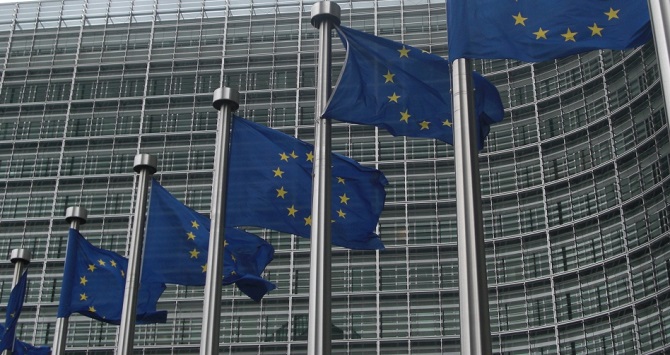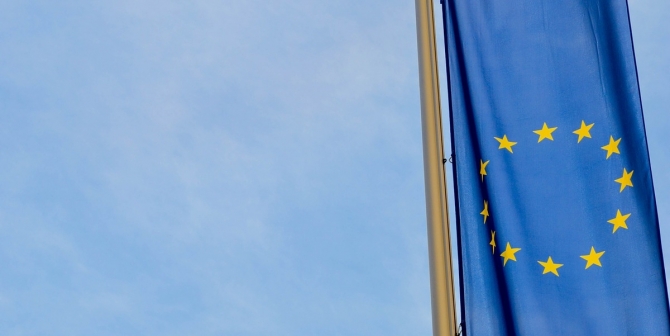Today, the Grand Chamber of the European Court of Human Rights issued its judgment in the case of Delfi AS vs Estonia, ruling that ‘The Court holds… that there has been no violation of Article 10 of the Convention.’ Professor Lorna Woods explains the key aspects of the judgment and offers her initial reaction to the decision.
The Grand Chamber in Delfi v. Estonia has, in essence, affirmed the outcome and the reasoning of the chamber judgment in the same case, albeit not unanimously.
The Facts
Delfi is one of the largest news portals in Estonia. Readers may comment on the news story, although Delfi has a policy to limit unlawful content, and operates a filter as well as a notice and take down system. Delfi ran a story concerning ice bridges, accepted as well-balanced, which generated an above average number of responses. Some of these contained offensive material, including threats directed against an individual known as L. Some weeks later L requested that some 20 comments be deleted and damages be paid. Delfi removed the offending comments the same day, but refused to pay damages. The matter then went to court and eventually L was awarded damages, though of a substantially smaller amount than L originally claimed. Delfi’s claim to be a neutral intermediary and therefore immune from liability under the e-Commerce regime was rejected. The news organisation brought the matter to the European Court of Human Rights and lost the case in a unanimous chamber decision. It then brought the matter before the Grand Chamber.
The Grand Chamber Decision
The Grand Chamber commenced by re-capping the principles of Article 10 of the European Convention on Human Rights from its previous case law. These are familiar statements of law, but it seems that from the beginning of its reasoning the Grand Chamber had concerns about the nature of content available on the internet. It commented:
while the Court acknowledges that important benefits can be derived from the Internet in the exercise of freedom of expression, it is also mindful that liability for defamatory or other types of unlawful speech must, in principle, be retained and constitute an effective remedy for violations of personality rights. [110]
The Grand Chamber then referred to certain Council of Europe Recommendations, suggesting:
a “differentiated and graduated approach [that] requires that each actor whose services are identified as media or as an intermediary or auxiliary activity benefit from both the appropriate form (differentiated) and the appropriate level (graduated) of protection and that responsibility also be delimited in conformity with Article 10 of the European Convention on Human Rights and other relevant standards developed by the Council of Europe” (see § 7 of the Appendix to Recommendation CM/Rec(2011)7, ..). Therefore, the Court considers that because of the particular nature of the Internet, the “duties and responsibilities” that are to be conferred on an Internet news portal for the purposes of Article 10 may differ to some degree from those of a traditional publisher, as regards third-party content. [113]
The Grand Chamber applied the principles of freedom of expression to the facts using the familiar framework. First there must be an interference with the right under Article 10(1) of the Convention, then any restriction should be assessed for acceptability according to a three stage test. The test requires that the restriction be lawful, achieve a legitimate aim and be necessary in a democratic society. The existence of a restriction to freedom of expression was not disputed, and nor that the Estonian rules pertained to a legitimate aim. Two areas of dispute arose: lawfulness and necessary in a democratic society.
Lawfulness
Lawfulness means that the rule is accessible to the person concerned and foreseeable as to its effects. Delfi argued that it could not have anticipated that the Estonian Law of Obligations could apply to it, as it had assumed that it would benefit from intermediary liability derived from the e-Commerce Directive. The national authorities had not accepted this classification, so essentially Delfi argued that this was a misapplication of national law. The Grand Chamber re-iterated (as had the chamber) that it is not its task to take the place of the domestic courts but instead to assess whether the methods adopted and the effects they entail are in conformity with the Convention. On the facts, and although some other signatory states took a more “differentiated and graduated approach” as suggested by the Council of Europe recommendation, the Grand Chamber was satisfied that it was foreseeable that the normal rules for publishers would apply. Significantly, the Grand Chamber commented, in an approach similar to that of the First Chamber that:
as a professional publisher, the applicant company should have been familiar with the legislation and case-law, and could also have sought legal advice. [129]
Necessary in a Democratic Society
The Grand Chamber started its analysis by re-iterating established jurisprudence to the effect that, given the importance of freedom of expression in society, necessity must be well proven through the existence of a ‘pressing social need’. It must determine whether the action was ‘proportionate to the legitimate aim pursued’ and whether the reasons adduced by the national authorities to justify it are ‘relevant and sufficient’. The Grand Chamber also emphasised the role of the media, but also recognised that different standards may be applied to different media. Again it re-iterated its view that the Internet could be harmful, as well as beneficial ([133]). The Grand Chamber then travelled familiar terrain, stating the need to balance Articles 8 and 10 and approving the factors that the First Chamber took into account: the context of the comments, the measures applied by the applicant company in order to prevent or remove defamatory comments, the liability of the actual authors of the comments as an alternative to the applicant company’s liability, and the consequences of the domestic proceedings for the applicant company ([142-3]).
Here, the Grand Chamber emphasised the content of the comments: that they could be seen as hate speech and were on their face unlawful [153] and that given the range of opportunities available to anyone to speak on the internet obliging a large news portal to take effective measures to limit the dissemination of hate speech and speech inciting violence was not ‘private censorship’. ([157]) The idea that a news portal is under an obligation to be aware of its content is a key element in the assessment of proportionality. Against this background (rather than one which accepts the notice and take down regime as enough), Delfi’s response had not been prompt. Further, ‘the ability of a potential victim of hate speech to continuously monitor the Internet is more limited than the ability of a large commercial Internet news portal to prevent or rapidly remove such comments’ [158]. In the end, the sum that Delfi was fined was not large, and the consequence of the action against the news portal was not that Delfi had to change its business model. In sum, the interference could be justified.
There were two concurring judgments, and one dissent. Worryingly, one of the concurring judges (Zupančič), having criticised the possibility of allowing anonymous comments, argued:
To enable technically the publication of extremely aggressive forms of defamation, all this due to crass commercial interest, and then to shrug one’s shoulders, maintaining that an Internet provider is not responsible for these attacks on the personality rights of others, is totally unacceptable.
According to the old tradition of the protection of personality rights, …, the amount of approximately EUR 300 awarded in compensation in the present case is clearly inadequate as far as damages for the injury to the aggrieved persons are concerned.
Initial Reaction
This is a long judgment which will no doubt provoke much analysis. Immediate concerns relate to the Court’s concern about the Internet as a vehicle for dangerous and defamatory material, which seems to colour its approach to the Article 10(2) analysis and, specifically, to the balancing of Articles 10 and 8. In recognising that the various forms of media operate in different contexts and with different impact, the Grand Chamber has not recognised the importance of the role of intermediaries of all types (and not just technical intermediaries) in providing a platform for and curating information. While accepting that the internet may give rise to different ‘duties and responsibilities’, it seems that the standard of care required is high.
Indeed, the view of the portal as having control over user generated content seems to overlook the difficulties of information management. The concurring opinions go to great length to say that a view which requires the portal only to take down manifestly illegal content of its own initiative is different from a system that requires pre-publication review of user generated content. This may be so, but both effectively require monitoring (or an uncanny ability to predict when hate speech will be posted). Indeed, the dissenting judges say that there is little difference here between this requirement and blanket prior restraint (para 35). Both approaches implicitly reject notice and take down systems, which are used – possibly as a result of the e-Commerce Directive framework – by many sites in Europe. This focus on the content has led to reasoning which almost reverses the approach to freedom of expression: speech must be justified to evade liability. In this it seems to give little regard neither to its own case law about political speech, nor its repeated emphasis on the importance of the media in society.
This post gives the views of the author, and does not represent the position of the LSE Media Policy Project blog, nor of the London School of Economics and Political Science.






Thanks for that lucid analysis.
When you infer that, in your view, the judgement could mean that “speech must be justified to avoid liability”, who are you suggesting will have a stronger obligation of justification? Are you suggesting that henceforth internet discussion hosts will themselves have to be confident they can justify the validity of comments they publish, or that they will have to (or, by taking a safety first attitude, tend to) regard as legitimate only those comments that are explicitly well-justified? Its a subtle but important difference: is a comment risky for a discussion host because of its content or (also) because of its form?
This ruling concerns commercial portals and does not include other media: “The Delfi case did not concern other fora on the Internet where third-party comments could be disseminated, for example an Internet discussion forum, a bulletin board or a social media platform,” the ruling states.
The incident took place almost 10 years ago. In the meantime, there has been a cross-over between news media and social media (and “intermediaries” – sharing). In practice, it may be difficult to distinguish between commercial and merely “social” media sites. If the result is less opportunity for discussion, it will be unfortunate. If it means editors have to think harder about editing, it may be positive.
The Norwegian Code of Ethics foresaw this problem in 2005, when the following article was introduced:
2.1. The legally responsible editor carries personal and full responsibility for the material contained in the publication, no matter the form. (http://presse.no/pfu/etiske-regler/vaer-varsom-plakaten/vvpl-engelsk/ )